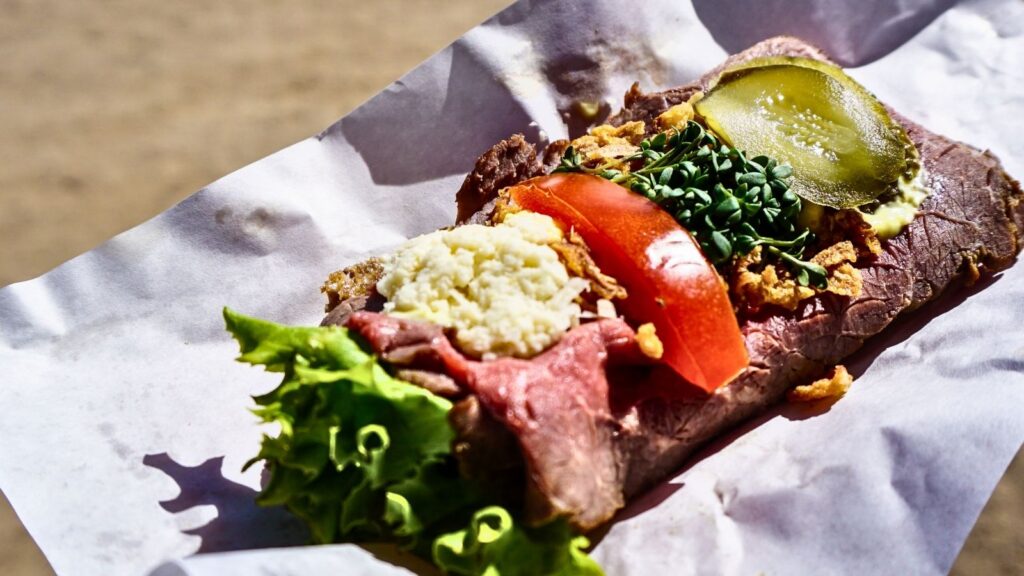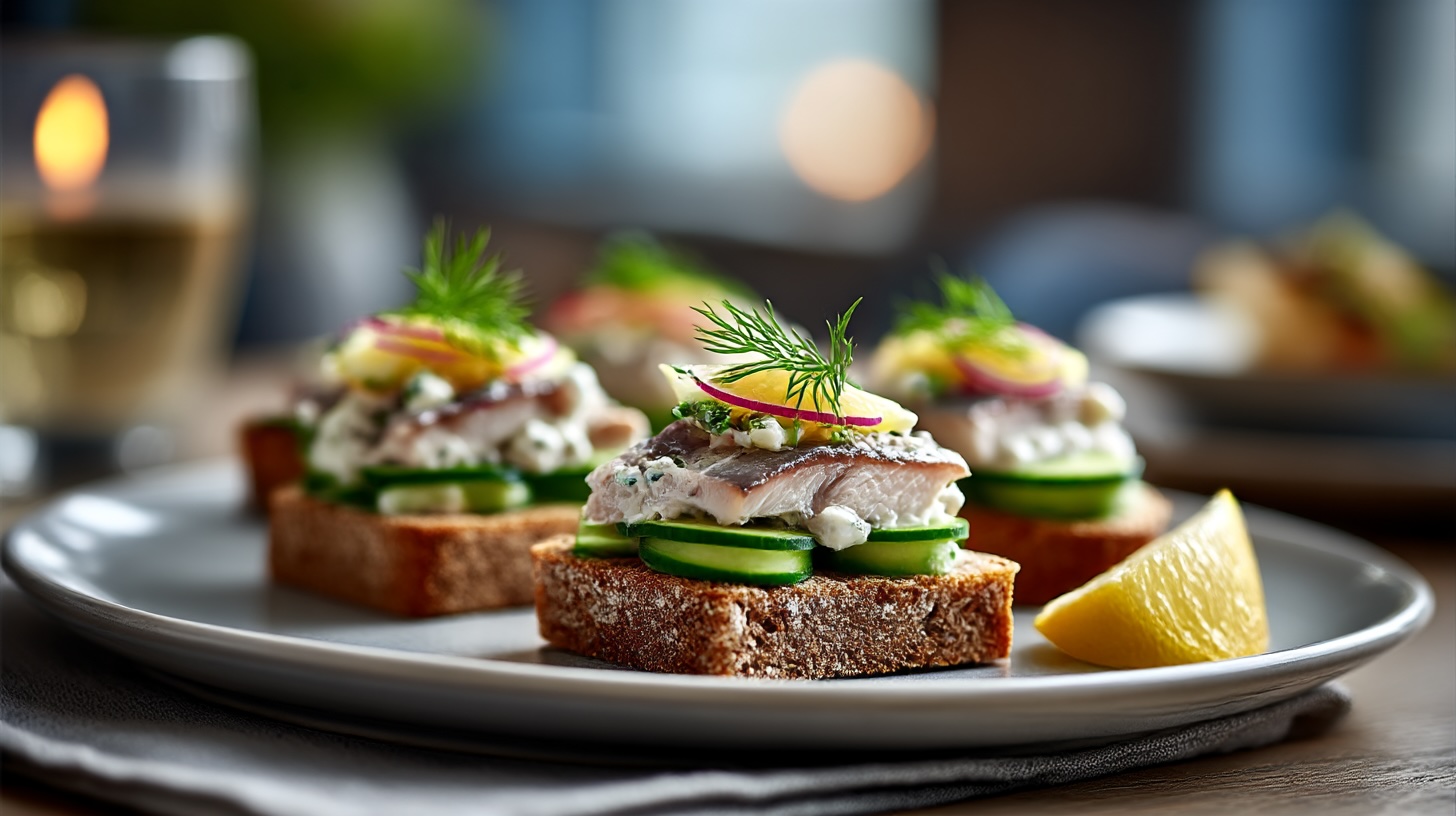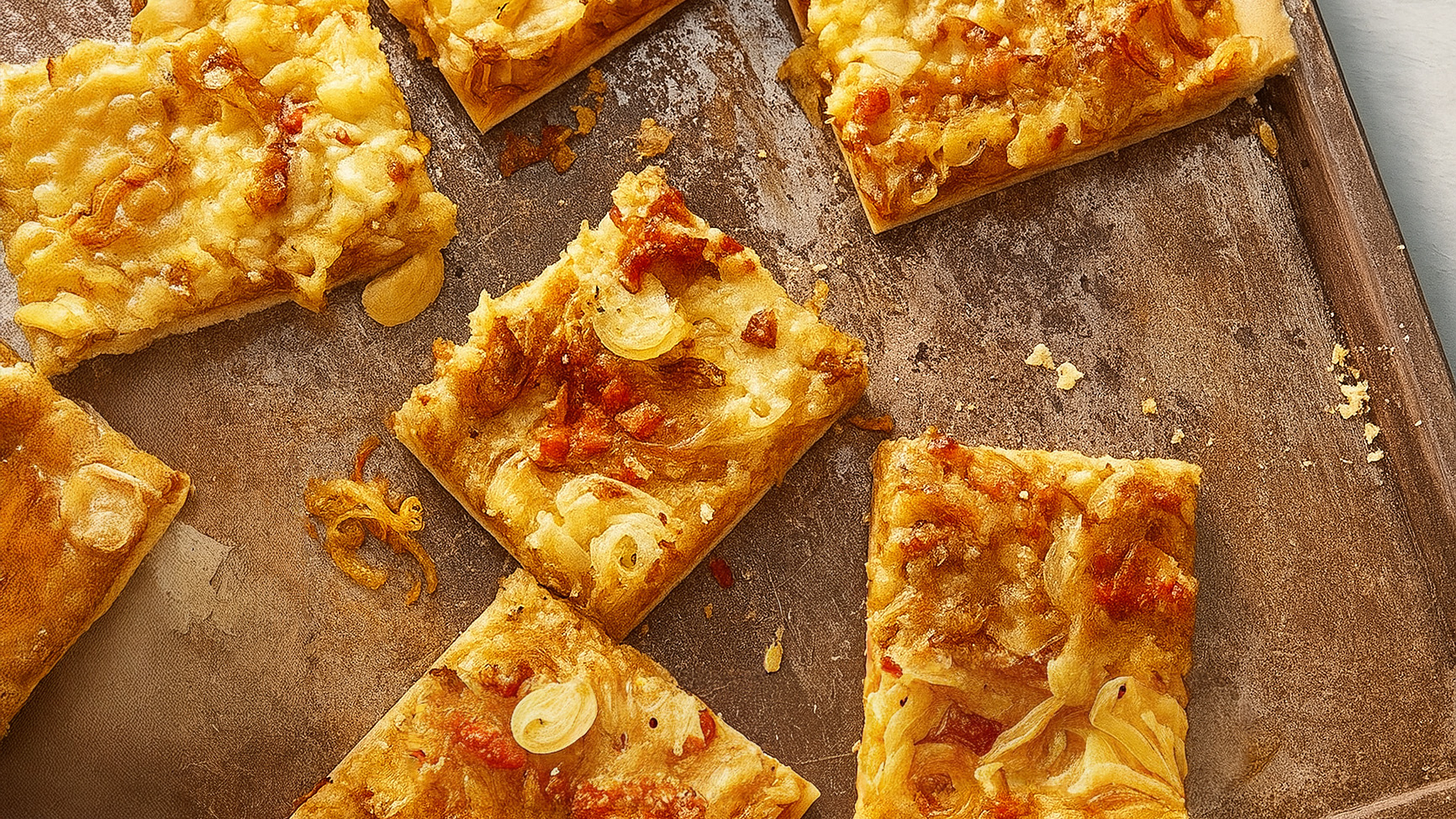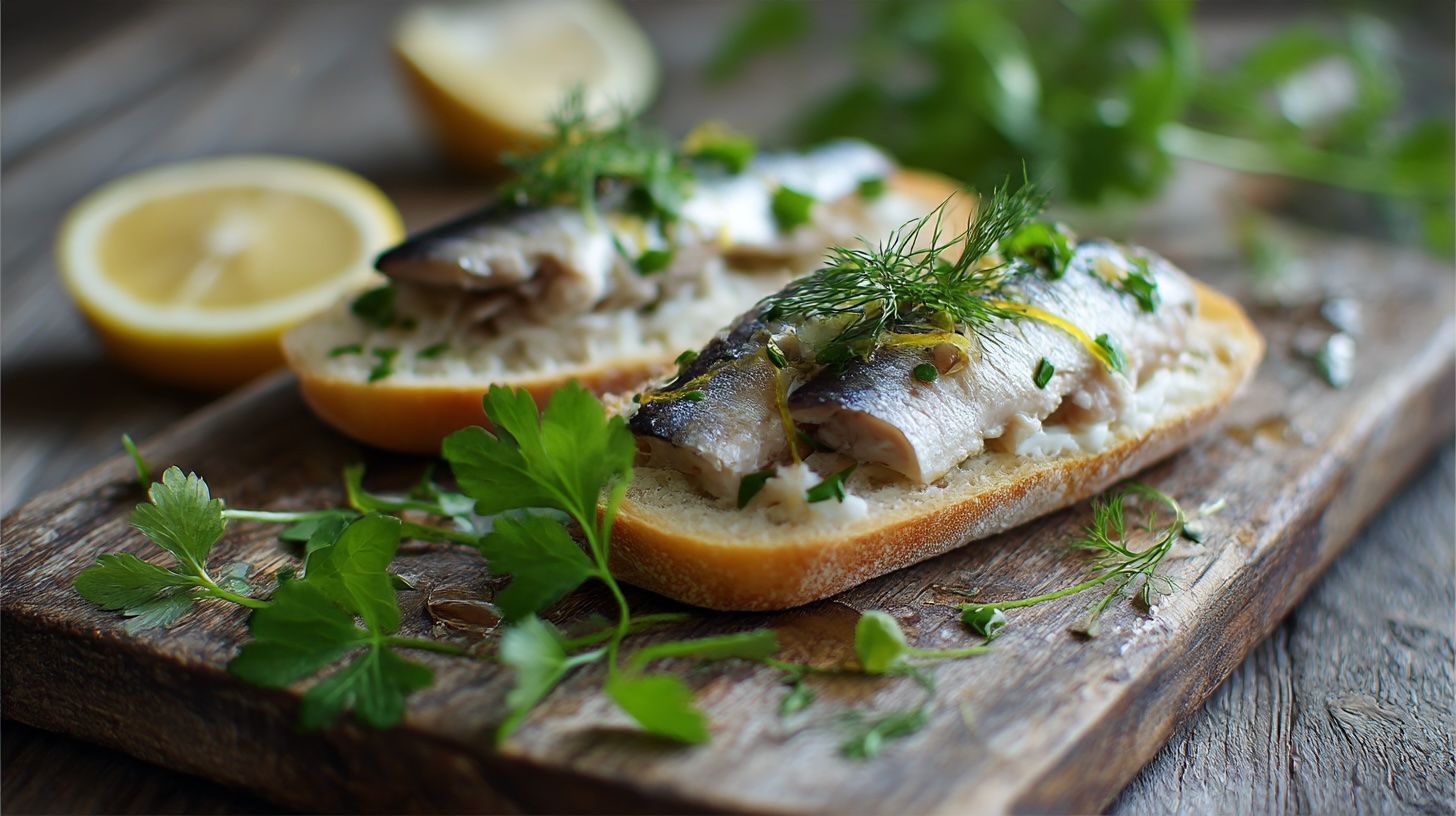Smørrebrød: Denmark’s Delicious Sandwich
Smørrebrød sounds like a sneeze in IKEA, but it’s actually Denmark’s most delicious open secret. Quite literally open, in fact: open-faced sandwiches, stacked like edible architecture, and consumed with more reverence than a Viking funeral. These are not your average lunchbox affairs. Smørrebrød is where rye bread meets social status, where every layer is a declaration of intent and every garnish tells a story. A meal? Sure. But also a statement.
The whole business began modestly enough, back in the 19th century. Factory workers needed something hearty to keep them going, so they slapped leftovers onto slices of rugbrød—dense, sourdough rye that laughs in the face of fluffier breads. It was filling, efficient, and utterly Danish: practical, no-nonsense, and likely to contain at least one form of herring. But then, in true Scandinavian fashion, something mundane became a matter of style. Smørrebrød went from factory floors to fine dining, garnished with dill and devilled eggs and a whisper of elitism.
There’s a ritual to it. First, you don’t just grab one and bite in. That’s a smørrebrød faux pas of the highest order. These things are eaten with knife and fork, like civilised humans. Second, the order matters. Traditionally, you start with herring (curried, pickled, or marinated), then move on to other fish or seafood (think shrimp with egg and mayo), followed by meats and cheeses, and only then the relatively decadent liver pâté or roast beef. Dessert? Please. You’re here for salt, smoke, and fermented mystery.
Regional twists do exist. In Copenhagen, high-end smørrebrød is a Michelin-lured affair. Expect things like lobster tails, truffle mayo, and wafer-thin radishes arranged like floral offerings. In Jutland, the slices are a bit more rustic: slabs of roast pork, generous helpings of remoulade, and a general vibe of “no fuss, just flavour.” Greenlandic versions might even feature musk ox or smoked halibut if you’re lucky. It’s globalisation, sure, but filtered through a layer of lingonberry.
What makes it special? The bread. Rugbrød is not merely a vehicle; it’s the whole chassis. Dense, dark, and nutrient-packed, it’s made with rye flour, whole grains, and sourdough starter. It fights back. It has texture. It demands respect. Then there are the toppings: every slice a curated composition, a small-scale edible tableau. From roast beef with horseradish and crispy onions to shrimp and lemon wheels nestled into an eggy fluff, smørrebrød is edible design.
And don’t even think of washing it down with something as pedestrian as orange juice. The correct liquid companions are beer and snaps (Danish akvavit). Preferably both. The beer should be a Carlsberg or Tuborg if you’re being safe, but go for a microbrew if you want to feel like you’re at the cool end of the communal table. The snaps? Ice cold, throat-searing, and guaranteed to make your second smørrebrød feel more philosophical.

Complementary foods? You don’t really need them. Smørrebrød is a complete meal in itself, a sandwich elevated to a lifestyle. But if you must, serve it with a light cucumber salad or maybe a warm bowl of creamy asparagus soup. Just don’t try to follow it with a burger. That’s culinary regression.
As for health benefits, smørrebrød scores surprisingly well, depending on the toppings. Rugbrød is full of fibre and slow-burning carbs. The fish toppings provide omega-3s. Vegetables, herbs, and pickles keep things crunchy and gut-friendly. Of course, piling on liver pâté, bacon, and fried onions has its consequences, but balance is key. And besides, happiness is part of health too, and smørrebrød delivers that in spades.
Where to find the best? Copenhagen, obviously. The city has made an art of smørrebrød, with legendary spots like Schønnemann or Aamanns offering textbook (and very photogenic) examples. But any Danish town worth its salt herring will have a café or deli ready to supply you with a selection wrapped in nostalgia and parsley. Outside Denmark? Try major cities with Nordic roots—places like Minneapolis, Berlin, or London—where Scandinavian delis cling on like culinary embassies.
Want to make your own? Good. Here’s a no-nonsense recipe that won’t require you to first relocate to Aarhus.
Smørrebrød Recipes
Start by making or buying rugbrød. If you’re feeling brave (and your neighbours enjoy the smell of fermenting rye), make it yourself:
Rugbrød Recipe
Mix 250g rye flour, 100g cracked rye grains, 200ml warm water, and 2 tablespoons sourdough starter. Let it sit overnight in a warm place. The next day, stir in 1 teaspoon salt, 1 tablespoon molasses, and another 150g rye flour. Pour into a greased loaf tin, smooth the top, cover, and let rise for 3 hours. Bake at 180°C for about an hour. Cool completely before slicing.
Now the toppings. Here’s a classic trio to try:
Pickled Herring Smørrebrød
- Butter the rye bread.
- Lay down pickled herring fillets.
- Add thin red onion slices, capers, and a few fresh dill sprigs.
Egg and Shrimp Smørrebrød
- Butter the rye bread again. Non-negotiable.
- Arrange slices of hard-boiled egg.
- Pile on cold-water shrimp.
- Dot with mayo and garnish with lemon, dill, and black pepper.
Roast Beef Smørrebrød
- Butter (yes, again).
- Lay slices of rare roast beef.
- Top with crispy fried onions, remoulade, and a slice of gherkin.
Serve with beer, snap the obligatory photo, and toast with snaps. Because once you go open-faced, you never go back.



